EXCLUSIVE: Girl, 5, receives double-lung transplant after rare condition turned her skin blue
When Harper Ryals turned 2, she hit a growth spurt. But her mom, Rebecca Newman, noticed something unusual with her daughter’s growth — Harper’s fingertips had turned blue.
“She got really big really fast,” Newman, 26, of Long Beach, Mississippi, tells TODAY.com. “Once she hit that growth spurt, we started noticing subtle changes in her, such as she was having trouble breathing.”
After a doctor’s appointment led an emergency room visit, testing found numerous arteriovenous malformations (AVM) in Harper’s lungs. An AVM is a jumble of incorrectly connected blood vessels that are weak and can easily rupture and bleed. Having just one is considered dangerous.
Eventually, doctors diagnosed Harper, now 5, with a rare disease called hereditary hemorrhagic telangiectasia (HHT), which causes AVMs, according to the U.S. Centers for Disease Control and Prevention.
The family soon learned that she had a genetic mutation that made her HHT unique. Her family felt stunned.
“This is already a rare disease but ... she has a very rare genetic mutation that has never been seen before,” Newman says. “It is something that actually happens by a crazy astronomical chance in the conception process.”
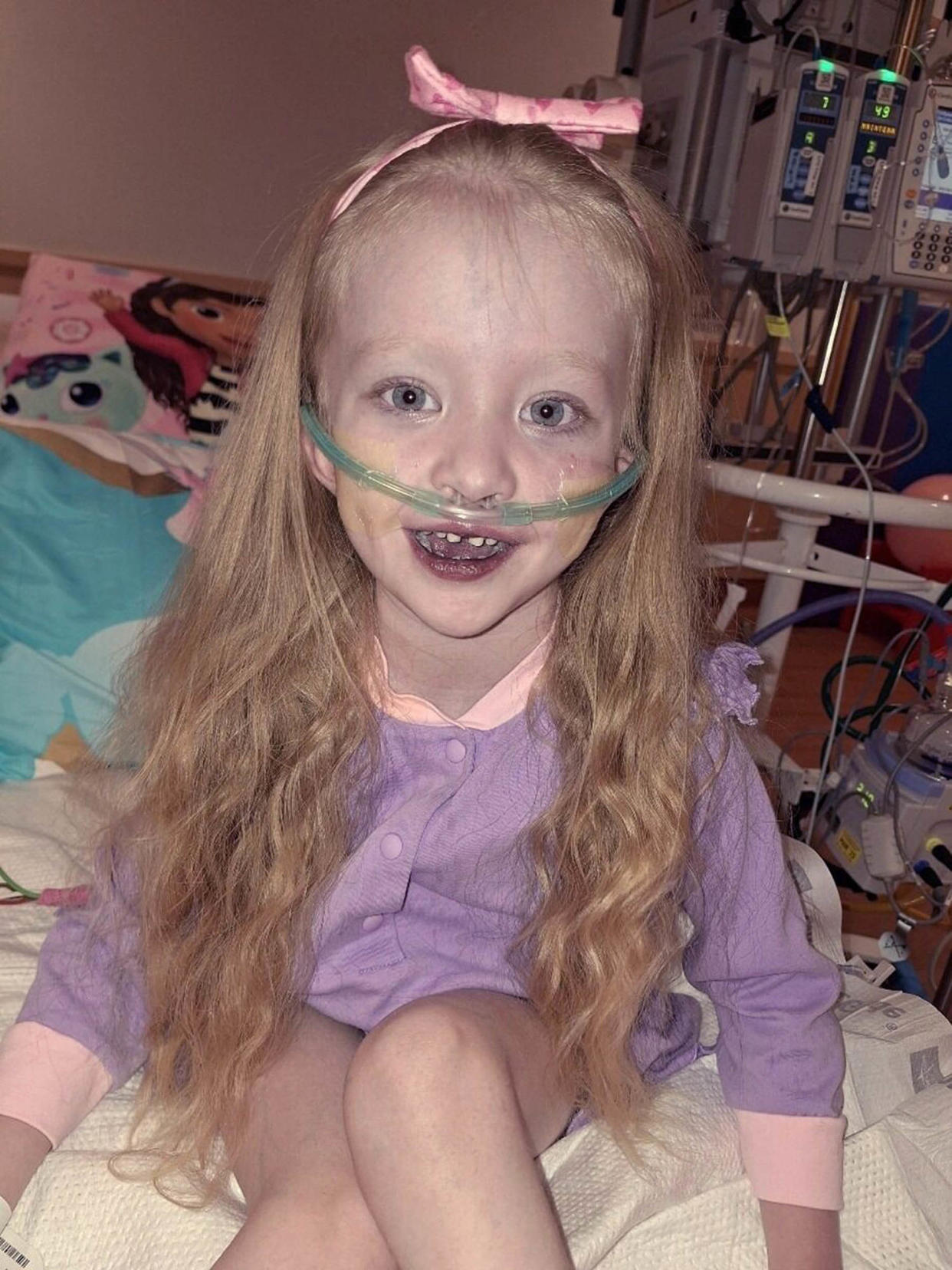
‘Struggling to breath’
When Harper was born, she appeared to be completely healthy. It wasn’t until she was 2 that her parents noticed anything wrong with her. After her fingers turned blue, she underwent a battery of tests that revealed that Harper had thousands of tiny AVMs in her lungs. This impacted her ability to receive properly oxygenated blood, and her lower blood oxygen levels caused a blue tint to her skin.
“She was struggling to breathe,” Newman says. “She was struggling with her strength.”
Doctors soon placed Harper on oxygen, and the little girl lived with thin tube called a cannula in her nose and an oxygen tank nearby. During the testing, doctors also discovered Harper also had a large AVM in her brain. If a brain AVM bleeds, it can cause cognitive and sometimes physical impairment, according to past TODAY.com reporting.
While Harper had a lot of scary health concerns, doctors worried most about her lungs.
“They were trying to come up with treatment options for the lungs because that was a more pressing matter,” Newman says. “Unfortunately, there was nothing that the doctors could do.”
Doctors couldn’t embolize the AVMs — a procedure that stops blood flow to a specific blood vessel to prevent it from bleeding — because there were too many. They also couldn’t remove a part of the toddler’s lung because the AVMs were spread throughout both of her lungs. Doctors felt flummoxed by Harper’s health.
“One doctor said, ‘Harper is an extraordinary, one-of-a-kind child,’” Neman recalls. “She also let us know that she has never in her career met a child as sick as Harper. That was very heartbreaking.”
The family was devastated by this assessment. The doctor mentioned a double-lung transplant as a possible solution, but that, too, sounded frightening.
“A double-lung transplant is a very rare, very risky surgery that is not all the time very successful," Newman says.
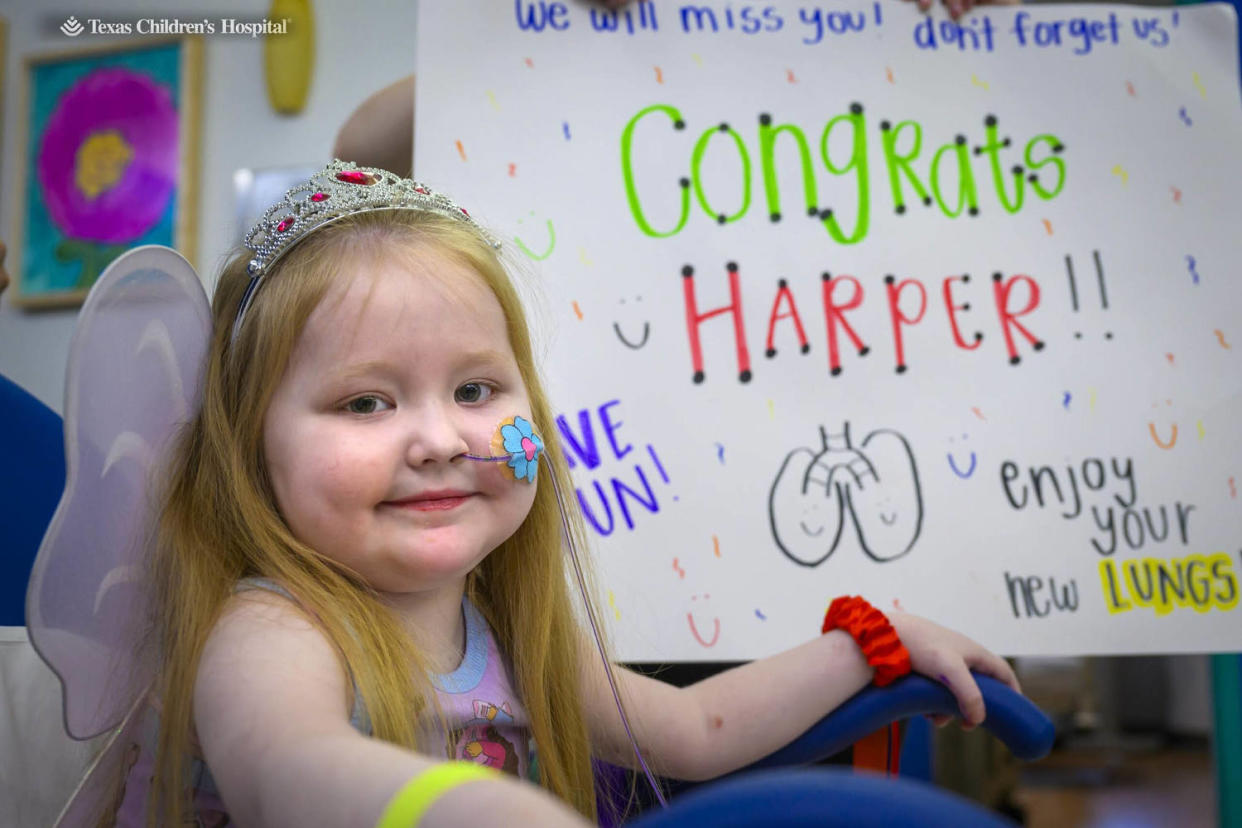
Even with all the health challenges she faced, Harper “pushed herself past her limits.” She enjoys playing video games and excels at Animal Crossing, Kirby and the Mario Kart.
“She has always been very ahead of her age as far as her intelligence goes, and she’s very intuitive,” Newman says. “She really likes to play with other kids and especially kids that are different, kind of like her.”
Children often asked Harper about her cannula, and Newman would try to explain it as best she could.
“We would have to tell them she has a very, very rare disease that nobody has ever heard about and it affects her lungs,” Newman says.
As time passed, Harper’s health deteriorated.
“She was suffering from very, very severe migraines and headaches because of the lack of oxygen,” Newman says.
In the fall of 2023, Newman and Harper traveled to Texas Children’s Hospital in Houston so Harper could be assessed for a double-lung transplant. A team of doctors decided she would be a candidate for the procedure. The family planned to relocate to Houston in 2024 so that Harper could be close by when lungs became available. During her Make-A-Wish trip in March 2024, though, Harper became very ill with a respiratory infection.
“She was receiving treatment until she got well enough to be air flighted directly to Texas Children’s,” Newman says. “On April 2, 2024, (she was listed) for a double lung transplant.”
After Harper spent 74 days in the intensive care unit waiting, the family learned that there were lungs available. Soon after surgery, Newman noticed a difference in her daughter.
“Now that her body is finally receiving the amount of oxygen that it needs, our baby is pink again,” Newman says. “It’s amazing to see her natural complexion.”
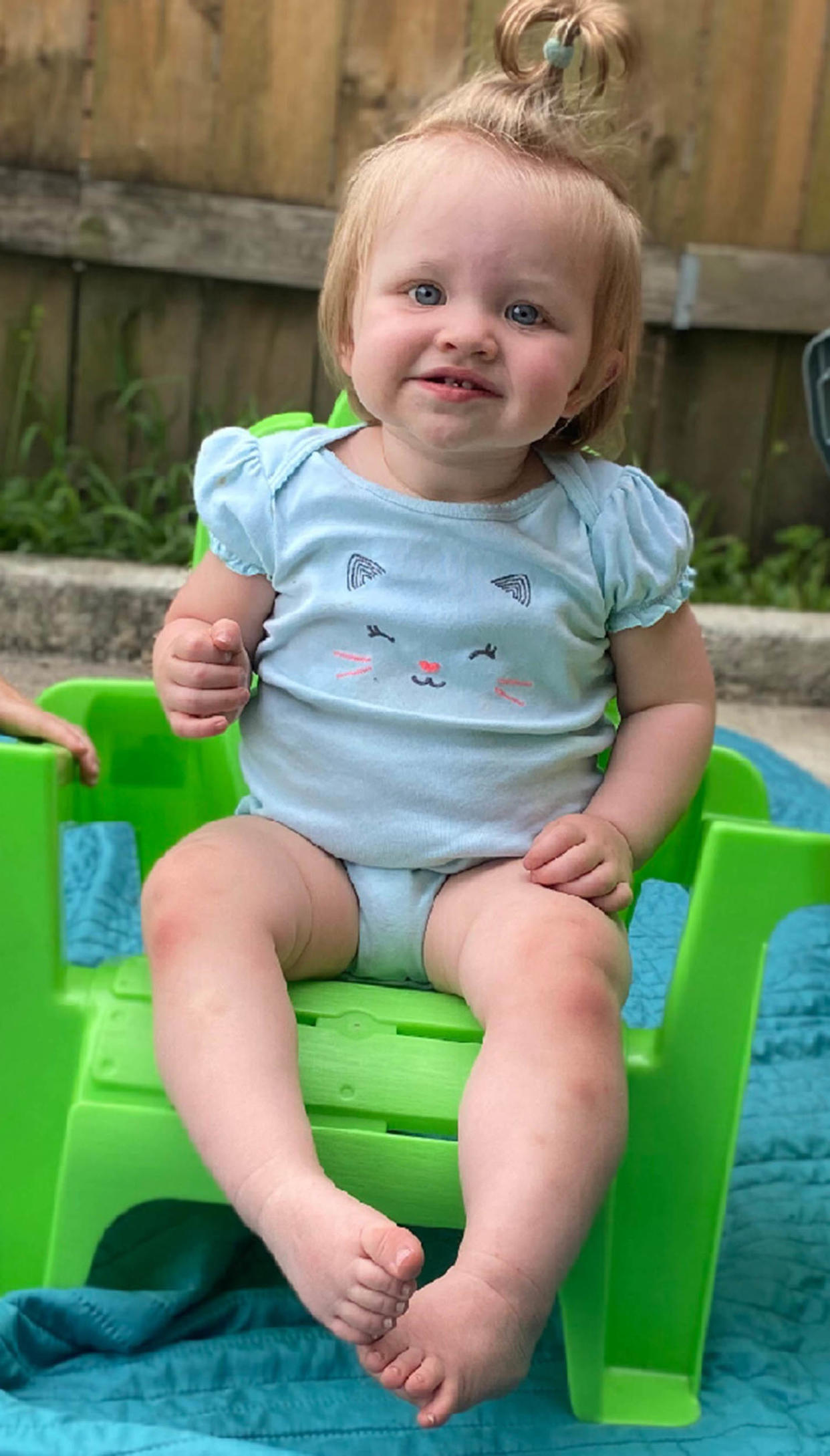
Pediatric lung transplants
Harper’s condition HHT causes AVMs, where “the arteries and the veins are connected in an abnormal way,” Dr. Tina Melicoff, medical director, lung transplant program, Texas Children’s Hospital, tells TODAY.com. “It can affect different organs.”
Many children with HHT experience recurrent nosebleeds due to broken capillaries in the nose. But they often have larger AVMs that can develop anywhere, including the skin, stomach, brain, liver or lungs, she says. AVMs in the lungs prevent oxygen from traveling to the bloodstream and the heart to be pumped through the body.
“The abnormal connection of those vessels do not allow the blood to be oxygenated,” Melicoff says. “It bypasses that gas exchange.”
While doctors can treat large AVMs in the lungs with surgery, Harper had micro-AVMs distributed throughout her lungs, likely due to her genetic mutation. A double-lung transplant was her only option.
“She was getting too exhausted because of her oxygen being very low,” Melicoff says. “It was very scary for the family. It was scary for us.”
Overall, lung transplants remain uncommon, Melicoff says, and she estimates that between 1,500 to 2,000 adults receive a lung transplant annually in the United States. Children account for about 20 to 50 lung transplants a year.
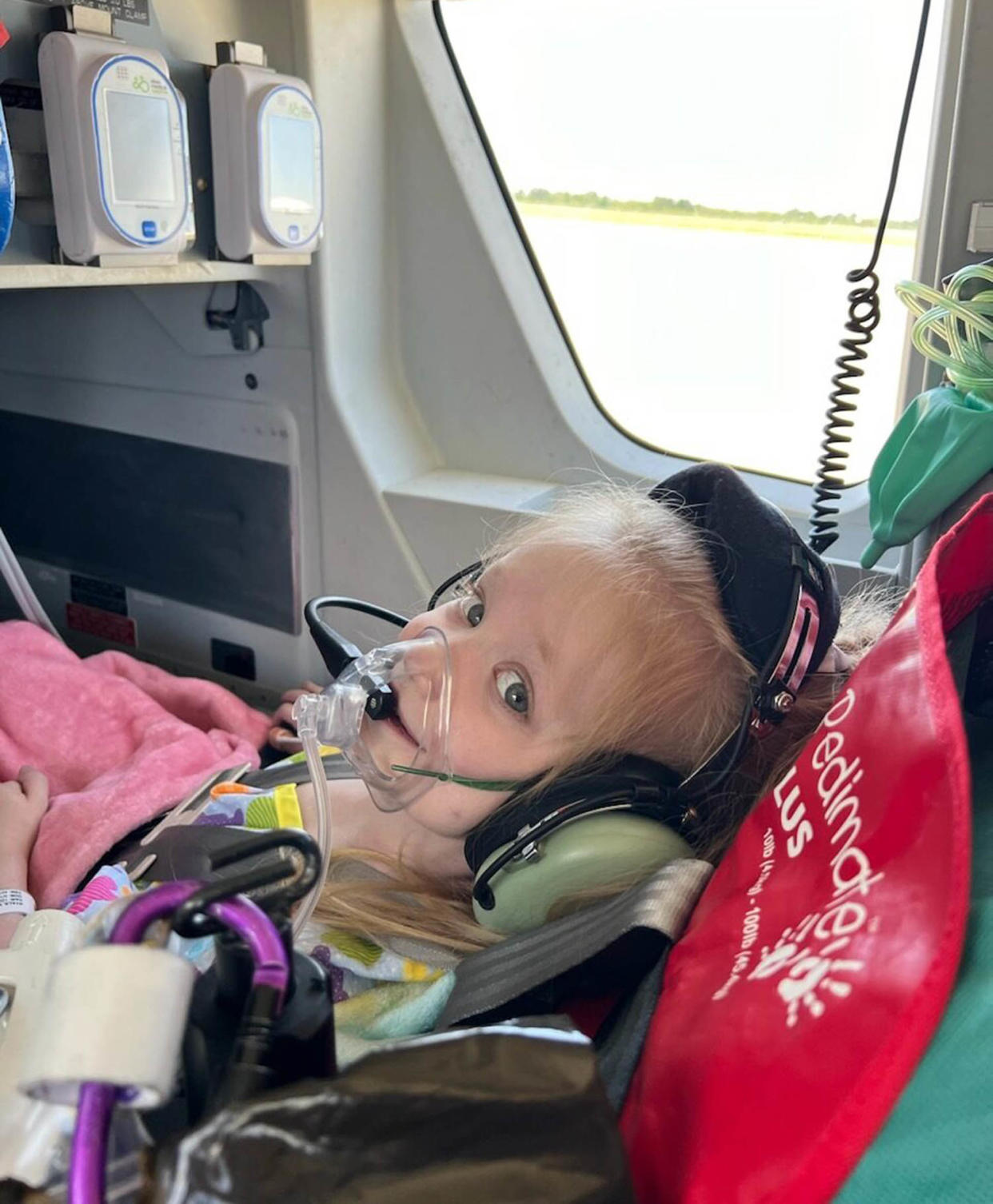
“Even with those low numbers, their wait times can be very long — and longer than for adults,” she says. “The reason is, thankfully, children are usually healthy.”
Texas Children’s Hospital is one of the few pediatric transplant centers, so patients need to be in Houston while they wait for organs.
“We don’t have that many donors, but the average wait time for somebody her age and size is around three to four months,” Melicoff says. “Harper waited a little bit longer.”
In mid-June, the family learned that lungs were available, and on June 15, Harper underwent a successful double-lung transplant. Doctors do not anticipate Harper developing any more AVMs in her transplanted lungs.
“The mutation is at the level of the blood vessels,” Melicoff says. “The healthy lungs that don’t have the mutation, so the expectation is ... she will continue to have normal oxygen saturation from now on.”
Still, Harper has the AVM in her brain, which needs to be monitored. And she takes anti-rejection medications "to convince her body that the lungs belong," which suppress her immune system and increase her risk of infection, Melicoff explains.
While lung transplants allow many children to live close to a normal life, the transplanted organs are unlikely to last their whole lives for a variety of reasons.
“We concentrate on the day-to-day, and we’re hopeful that she’s doing great right now," Melicoff says. "We’ll maintain her health for as long as we can."
'Overall wonderful'
Harper is still in Houston for follow-up visits with her doctors, and she’s thriving. Newman can see a difference not just in how she looks but by how much energy Harper now possesses. Today, Harper does physical therapy and walks without breathing heavily or being tethered to oxygen.
“Despite not having enough oxygen before the transplant, she was still an intelligent little girl, and now she’s just exceeding and excelling in everything,” Newman says. “She’s learning to read. She’s learning to write. She’s learning to spell. She’s learning to count. … She’s doing absolutely overall wonderful.”
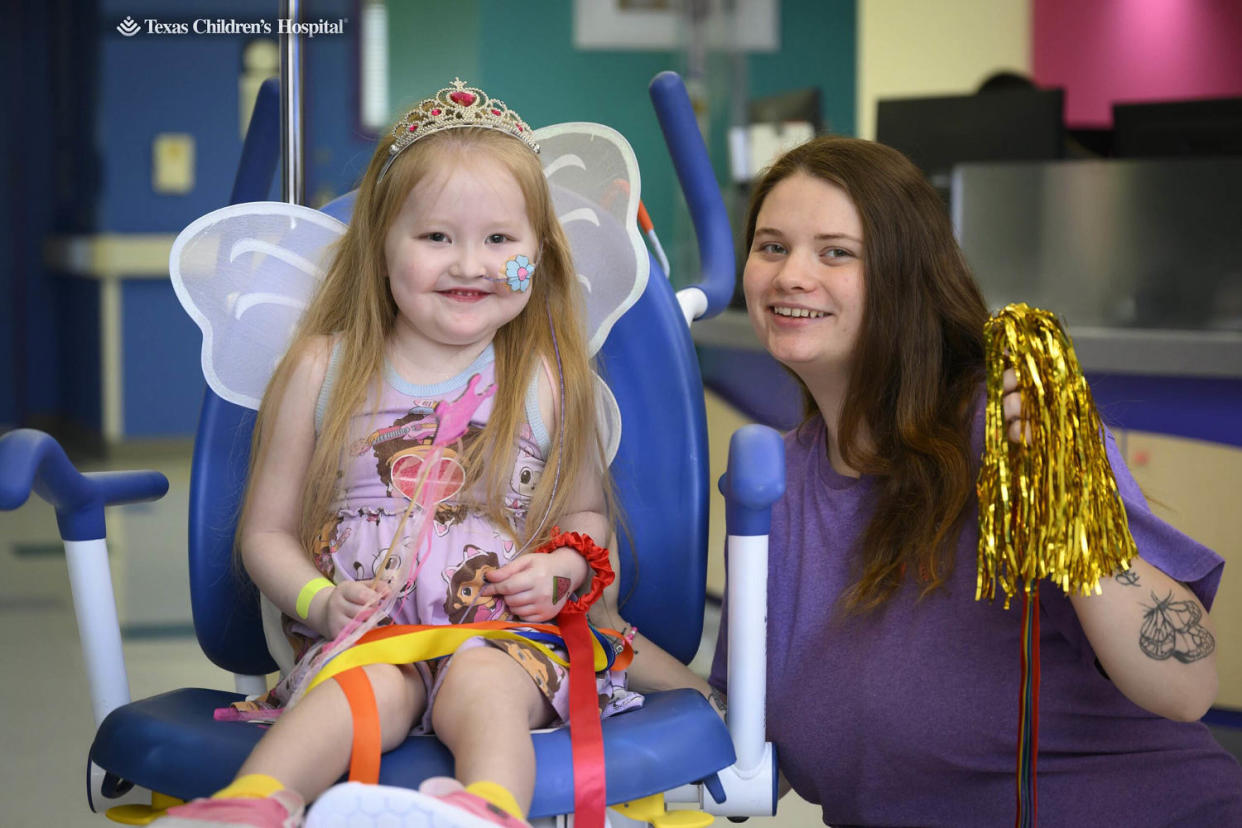
Her mood has improved, too.
“She’s very sweet, very lovable, very happy,” Newman says. “She’s never complained of pain since her transplant, and she’s very, very strong.”
The family feels grateful for the donor’s family.
“Some child’s family decided to make a generous donation of their loved one’s organs to save the lives of other children, one of them being Harper,” Newman says. “Sometimes the things that may seem impossible can really happen if you just believe.”
This article was originally published on TODAY.com
